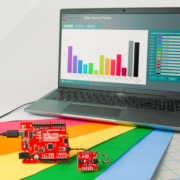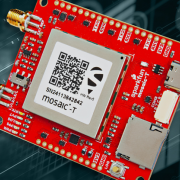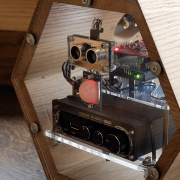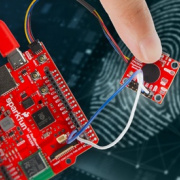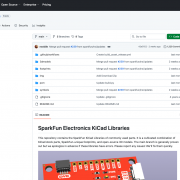Assembling the XRP Robot Without a Guide (And Getting Judged for It)
What happens when you give three SparkFun Marketing employees XRP robotics kits, take away the instructions, start a timer, and add a little friendly competition?
What happens when you give three SparkFun Marketing employees XRP robotics kits, take away the instructions, start a timer, and add a little friendly competition? You get the SparkFun XRP Build Challenge: a chaotic, hands-on experiment in learning by doing.
The Challenge
Armed with the Experiential Robotics Platform (XRP) Kit, SparkFun’s Chris, Lauren, and Sean were tasked with building their robots from scratch.
- No instructions.
- No walkthroughs.
- Just raw curiosity and a clock counting down.
Some had assembled the kit before (sort of), some had not. What followed was a mix of problem-solving, playful sabotage, and a surprising amount of teamwork. Once the bots were complete(ish), it was time for inspection.
Enter the Engineer
Judging the final builds was Dryw, a SparkFun engineer who helped design the XRP's control board. Dryw knows this platform inside and out, so naturally, he spotted everything from flipped wires to servo arms mounted in the wrong direction.
No mercy was given. Points were awarded (and taken away) for:
- Sensor placement and wiring
- Cable management (or lack thereof)
- Sticker aesthetics
- Overall build accuracy
Common Mistakes We Learned From
If you’re assembling your XRP Kit soon, here are a few mistakes our team made, and what you should double-check:
- Sensor wire order matters: Flipping the ultrasonic sensor’s trigger and echo wires = no data.
- Plug into the right port: The connectors are labeled for a reason. Use them!
- Servo orientation counts: A misaligned servo arm might run right into the chassis.
- Cable routing isn’t just cosmetic: It affects performance and Dryw notices.
Testing the Software
After judging, each robot went through basic functionality tests using the XRP Code Editor, the beginner-friendly programming environment that powers the XRP. The tests checked:
- Line sensor responsiveness
- Ultrasonic distance measurement
- Servo movement
- Drive motor control
Use the Guide (Seriously)
While this challenge was a fun exercise in winging it, we don’t recommend skipping the instructions on your first build. The XRP platform features a comprehensive Assembly Guide that guides you through every step and can help you avoid many of the mistakes we made under pressure.
